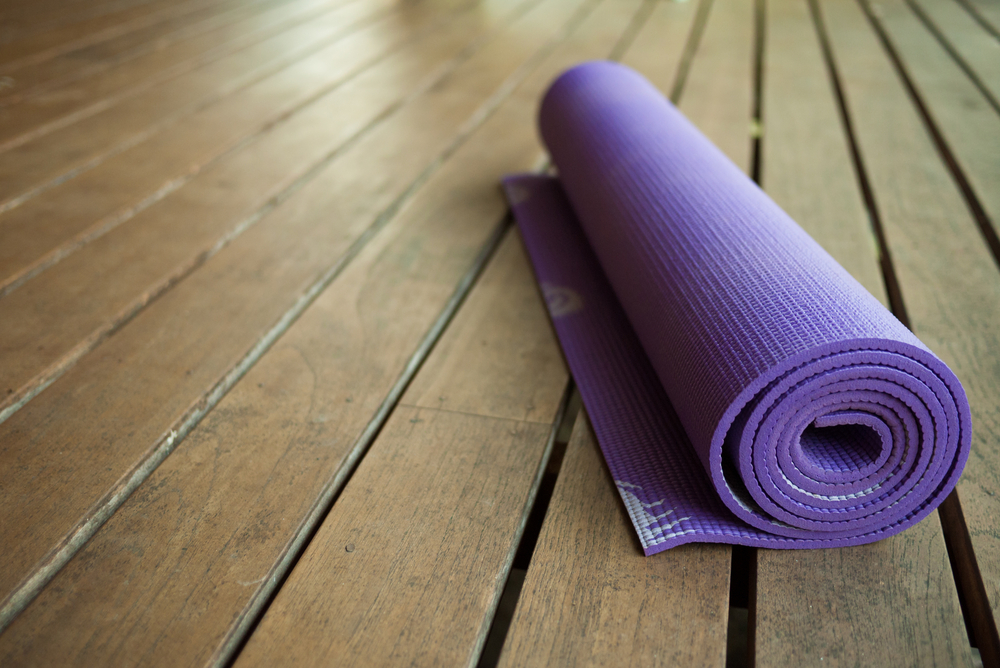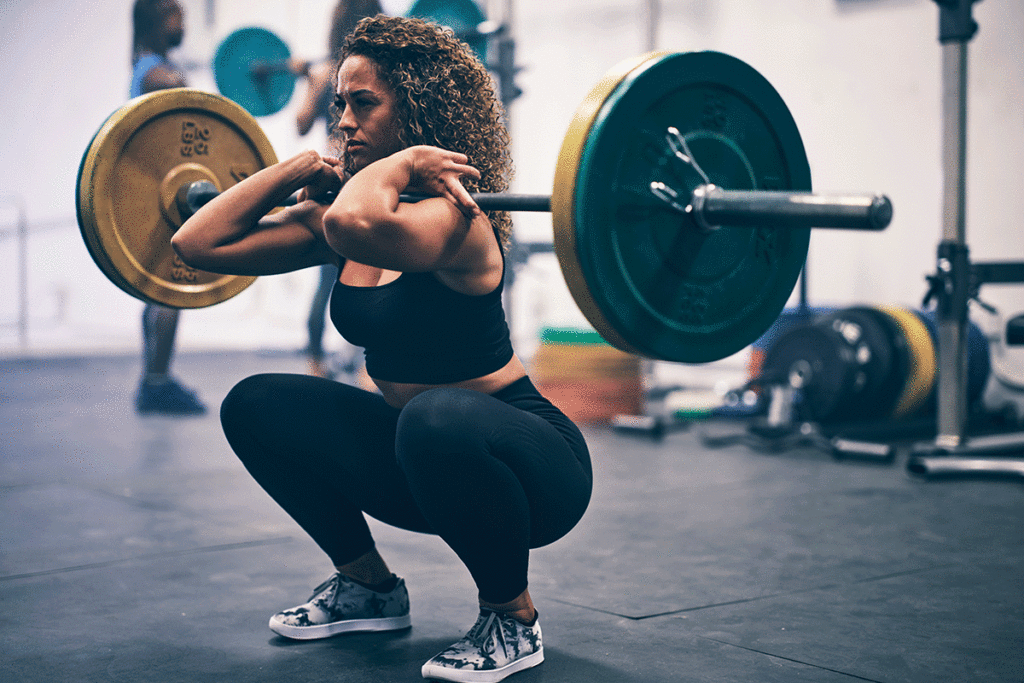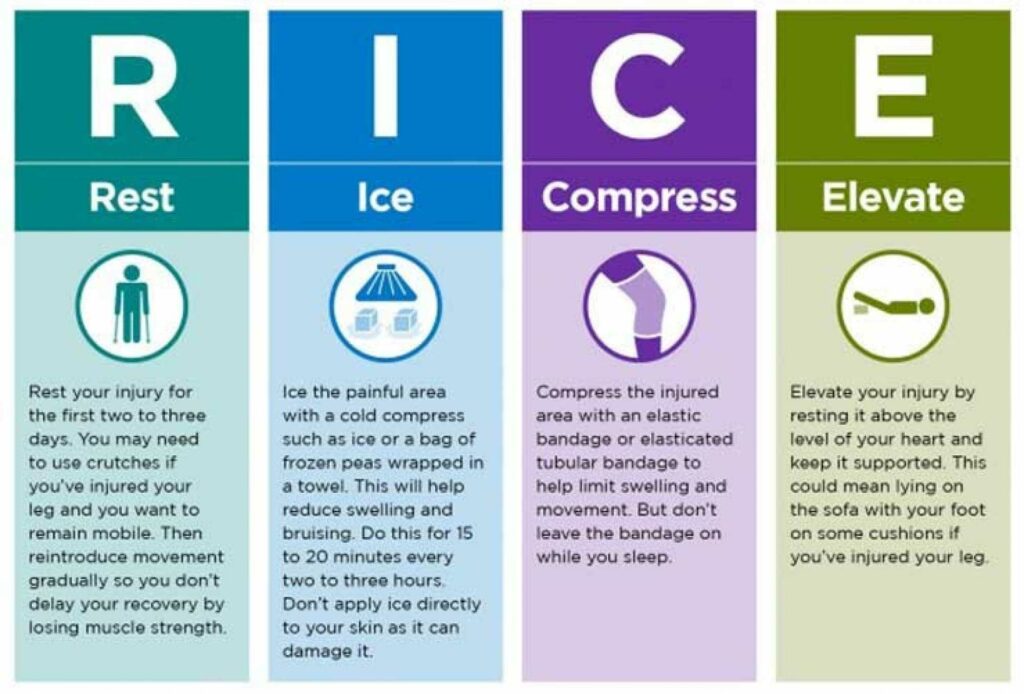Disclaimer: full disclosure, I am not a physiotherapist, I also do not work in sports medicine. The content of this article is purely informative and not meant to treat sports injuries. If you do have a sports injury you may find this information useful, but you should seek out advice from a sports injury specialist.
Personal Experience With Sports Injuries
I’ve been involved in fitness for over 20 years, as an academic teaching sports science /nutrition, researching and publishing, as an athlete competing and as a coach helping others achieve their goals. As an athlete I’ve competed for over 15 years in bodybuilding, strongman, and powerlifting. Bodybuilding is what I’ve always been good at though and over the years I’ve racked up my fair share of injuries including but not limited to: herniated discs (on multiple occasions), sacroiliac joint tears, groin tears, meniscus tear, bicep tears, golfers’ elbow and various other aches, pains, and niggles. When you’re training at a high level, you’re often walking a tight rope between progression, sports injuries and under training. Admittedly though most of these injuries were caused by my own stupidity: training through pain, lifting when tired or with low body fat, ego lifting, bad technique etc. The other injuries were either overuse or simply bad luck. When you lift for as long as I have sometimes it’s just miles on the clock. When it comes to treating sports injuries, I’ve done it all: physiotherapists, osteopaths, chiropractors, massage therapists, foam rolling body tapering, hot yoga, pilates, swimming, ice baths, active isolated stretching etc. Prevention is better than a cure and the more you look after your body, the less likely you are to develop a sports injury.

Injuries do happen though, and they suck. Not only do they stall your progress, but they can also affect your mental well-being. There’s nothing worse than your body telling you to stop despite the fact you know you’re capable. It’s frustrating as hell not being able to do the thing you love. Moreover, the pain can be a real drag. Taking pain killers for months at a time can be depressing. Nothing will make you feel old more than struggling to put your socks on, tie your shoes or not being able to play with your kids because you’re suffering from pain. In this article, I’ll explore the common types of sports injuries, their causes, and how to manage them effectively.
What Are The Different Types of Sports Injuries?
Sports injuries can be classified into different categories based on the affected body part, mechanism of injury, and severity. Here are some of the most common types of sports injuries:
- Sprains and Strains: Sprains occur when ligaments, which are the tough bands of tissue that connect bones to each other, are stretched or torn. Strains, on the other hand, affect muscles or tendons, which connect muscles to bones. Sprained ankles, strained muscles, and ligament tears in the knee are common examples of sprains and strains in sports. Strains and sprains are graded 1 to 3 depending on their severity of the injury with 1 being the least severe compared to grade 3 which usually indicates a complete tear and, in most cases, requires surgery.
- Fractures: Fractures, or broken bones, can occur due to acute trauma, such as a fall or a direct blow to the bone. You’re most likely to see these types of injuries in contact sports. Stress fractures, which are small cracks in the bone, can also occur from overuse and repetitive stress, commonly seen in endurance sports like running. Both are unlikely in resistance training where most of the injuries are typically soft tissue.
- Dislocations: Dislocations happen when bones that normally articulate with each other are forced out of their normal position. This can cause joint instability and severe pain. Dislocated shoulders and fingers are common in sports that involve contact or repetitive overhead movements. For gym sports, Olympic weightlifting, and cross fit are more likely to see these sorts of problems because of movements like the snatch and overhead squat.
- Concussions: Concussions are mild traumatic brain injuries that occur due to a blow to the head or a jarring force to the body. They can result in a range of symptoms, including headache, dizziness, confusion, and memory problems, and require immediate medical attention. Again, these are most common among contact sports.
- Overuse Injuries: Overuse injuries occur due to repetitive motions and excessive stress on muscles, tendons, bones, or joints without adequate rest and recovery. Common overuse injuries in sports include tendonitis, stress fractures, and bursitis. These are probably the most common types of injuries I encounter in physique athletes.
What Causes of Sports Injuries?

Sports injuries can result from a variety of causes, including:
- Accidents and Trauma: Accidents and trauma, such as falls, collisions, and direct blows, are common causes of sports injuries. These can occur in contact sports like football, basketball, and soccer, as well as in non-contact sports like gymnastics, skiing, and snowboarding.
- Overuse and Poor Technique: Overuse injuries can occur when an athlete repetitively performs the same motion or activity without giving their body enough time to recover. Poor technique or biomechanics during sports activities can also increase the risk of injury, as it puts unnecessary stress on certain body parts. This can be a problem for physique athletes with very low body fat levels alongside the change in biomechanics that occurs at these low body fat levels.

- Inadequate Conditioning: Insufficient strength, flexibility, and endurance can increase the risk of sports injuries. Athletes who do not engage in proper conditioning exercises and do not gradually progress their training are more susceptible to injuries. I tend to see these issues the most in newbies who don’t have a history of exercising and in detrained athletes who fail to adjust their training to their new level.
- Environmental Factors: Environmental factors, such as playing on uneven surfaces, extreme weather conditions, and improper equipment, can also contribute to sports injuries. For example, playing football on a wet and slippery field can increase the risk of sprained ankles, while using ill-fitting or inappropriate gear can lead to injuries in sports like cycling, skiing, and rock climbing.
Understanding the Healing Process And Managing Sports Injuries
In order to maximise your recovery from a sports injury it’s important to first understand how the healing process. The healing process can broadly be split into 4 different phases: bleeding/inflammation, proliferation, remodelling, and functioning.

- Inflammatory/bleeding Stage: The first stage of healing begins immediately after an injury and is characterised by inflammation. Inflammation is the body’s natural response to injury and is necessary for initiating the healing process. Inflammation also causes swelling, and pain. During this stage, damaged tissues release chemicals that cause blood vessels to dilate, while attracting immune cells to the injured area to mop up any debris. The inflammatory stage typically lasts for a few days to a week. It’s important to realise that the inflammatory phase although necessary for the removal of damaged tissues can be quite destructive. It’s therefore essential to get the inflammation under control as soon as possible using Ice and non-steroidal anti-inflammatory drugs (NSAIDs). The RICE technique (rest, ice, compression, and elevation) is therefore usually the first port of call in any sports injury.
- Proliferative Stage: The second stage of healing is the proliferative stage, also known as the tissue repair stage. This stage begins a few days after the injury and can last for several weeks. During this stage, the body starts rebuilding damaged tissues with new cells. Collagen, a type of protein, is laid down to form scar tissue, which helps to strengthen the injured area. Although the pain from the initial inflammatory phase may have subsided, the damaged area is unlikely to be back to full strength, this is why it’s important to follow a proper rehabilitation program. This may involve graduated exercises to restore flexibility, strength, and function, Modalities such as heat therapy, ultrasound, and electrical stimulation may also be used to facilitate tissue healing. It’s important to progress exercises and activities gradually to avoid re-injury and promote optimal healing.
- Remodelling Stage: The third stage of healing is the remodelling stage, also known as the maturation stage. This stage can last for several weeks to months, depending on the type and severity of the injury. During this stage, the scar tissue formed during the proliferative stage undergoes remodelling and maturation, becoming stronger and more organised. Rehabilitation during the remodelling stage focuses on gradually increasing the intensity and complexity of exercises to further restore function and promote tissue remodelling. This may involve sports-specific exercises, functional training, and proprioceptive training to improve balance and coordination. The goal is to progressively load the injured area in a controlled manner to help the tissues regain their pre-injury strength and function.
- Functional Stage: The final stage of healing is the functional stage, which marks the return to pre-injury activity levels. This stage can vary in duration and depends on the individual’s progress and the nature of the injury. During this stage, the focus is on gradually transitioning back to sports or physical activities, while monitoring for any signs of re-injury or persistent symptoms.

How Long Does It Take To Recover From A Sports Injury
Recovery from a sports injury is dependent on multiple factors including but exclusive too: the severity and type of injury, past injury history, age, genetics, and an individual’s general health (e.g obesity, smoking status). Below is a timeline of how long you can expect to recover from common sports injuries. Note however that these timelines are based on following a proper treatment/rehabilitation program from a qualified professional.
| Common Sports Injuries from Weight Training | Estimated Recovery Timeframe |
| Hamstring strain or tear | 2-6 weeks |
| Disc herniation or bulge in the back | 4-12 weeks |
| Golfer’s elbow (medial epicondylitis) | 4-8 weeks |
| Rotator cuff tear | 6-12 weeks |
| Anterior cruciate ligament (ACL) tear | 6-9 months |
| Meniscus tear | 4-8 weeks |
| Shoulder impingement syndrome | 4-8 weeks |
| Wrist sprain or strain | 1-4 weeks |
| Lumbar strain or sprain in the lower back | 2-6 weeks |
| Patellar tendinitis (jumper’s knee) | 2-6 weeks |
| Plantar fasciitis | 4-8 weeks |
| Tennis elbow (lateral epicondylitis) | 4-8 weeks |
| Stress fracture | 4-8 weeks |
| Ankle sprain | 1-4 weeks |
| Dislocated joint | 4-8 weeks |
How Should I Manage My Sports Injury?
Proper management of sports injuries is crucial for promoting healing, preventing complications, and facilitating a safe return to sports. Here are some general guidelines for managing sports injuries, including the RICE principle:
- Rest: Rest is often the first step in managing sports injuries, especially in acute cases like fractures, dislocations, and severe sprains. It allows the body to initiate the healing process and prevents further damage. However, it’s important to strike a balance between rest and maintaining mobility to prevent joint stiffness and muscle atrophy. This is one of the classic thing’s physique athletes are guilty of. It’s not uncommon to hear of an athlete having an issue with his knee unable to squat, yet lifting 100s of kgs in a deadlift, leg press or lunge. Not ideal when trying to remodel tissue.
- Ice: Applying ice or a cold compress to the injured area can help reduce inflammation, swelling, and pain. Ice should be applied for about 15-20 minutes at a time, several times a day, and should be wrapped in a towel or cloth to protect the skin from frostbite. Don’t underestimate how powerful ice is. For pain relief and reducing swelling its excellent, particularly in the initial stages. Sometimes where an individual is still experiencing pain months after an injury NSAIDs should be used to get any residual swelling or inflammation causing pain under control so the next phase of the healing process can start.
- Compression: Compression, using an elastic bandage or wrap, can help reduce swelling and provide support to the injured area. However, it’s important not to wrap too tightly as it can impair circulation. If you experience increased pain, numbness, or tingling, loosen the compression bandage immediately. The compression helps especially in the inflammatory phase, the compression helps restrict blood flow to the area and get any swelling under control.
- Elevation: Elevating the injured limb above heart level, if possible, can help reduce swelling by promoting drainage of excess fluids from the injured area. Remember inflammation is destructive and we want to move into the proliferation/remodelling phases as quick as possible. This can be done by propping up the injured limb with pillows or other supportive devices.

- Rehabilitation: Rehabilitation plays a crucial role in the management of sports injuries. It may involve exercises to improve strength, flexibility, and range of motion, as well as physical therapy, occupational therapy, or other modalities depending on the type and severity of the injury. It’s important to follow a rehabilitation plan prescribed by a qualified healthcare professional to ensure safe and effective recovery. Trust me on this point, sports injuries and the human body is complicated. Getting a qualified second opinion on what’s going on is well worth your while otherwise you can end up investing a lot of time and effort into tackling the wrong issues for months and getting nowhere.
- Prevention: Taking steps to prevent sports injuries is key to minimizing the risk of future injuries. This includes proper warm-up and cool-down exercises, using appropriate gear and equipment, maintaining good physical fitness, following proper techniques and form, and allowing adequate rest and recovery between workouts or activities. Taking deloads every 4 to 6 weeks, alongside regular sports massage and stretching can go a long way to preventing sports injuries.
Sports injuries are complex, if you get one, you should seek medical advice. Preventing injuries with sound exercise technique, proper warm up and cool down techniques, good flexibility, deloads and regular maintenance from a sports masseur/physio can insure you minimise the risk of getting one. However, if you lift or play sports for 20 years sooner or later, you’re likely to pick up a knock or two. Should this occur remember the healing process takes time and the use of the RICE technique in the initial stages can go a long way to accelerating the recovery process. Thereafter your next port of call should always be to adjust your training appropriately and incorporate a rehabilitation program from a registered sports physiotherapist. As always if you think we can help here at ProPrepCoaching then be sure to follow the sign up link (https://proprepcoaching.com/sign-up/)
